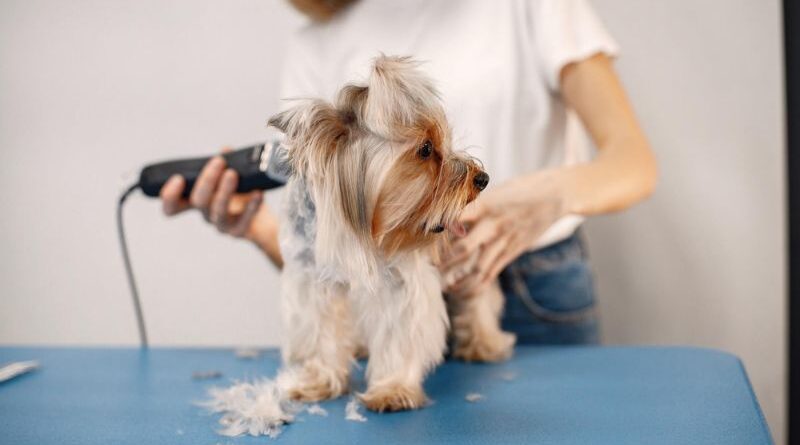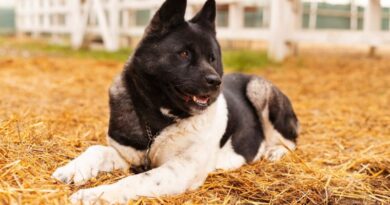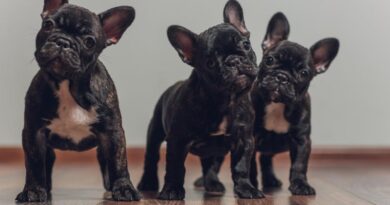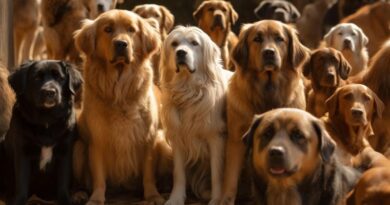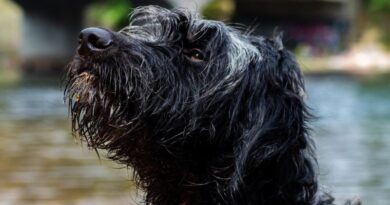Embark on a journey to enhance your canine companion’s well-being with our guide on “How to Avoid 10 Common Dog Grooming Mistakes.” Grooming is more than a cosmetic ritual; it’s a crucial aspect of your dog’s health and happiness. In this comprehensive exploration, we’ll navigate through common pitfalls, offering valuable insights on proper grooming techniques.
From selecting the right tools to establishing effective routines, join us in ensuring a positive and stress-free grooming experience for your furry friend. Let’s delve into the world of responsible pet care, where grooming becomes a delightful bonding experience, fostering a thriving relationship between you and your beloved canine companion.
Common Dog Grooming Mistakes
Explore the pitfalls to avoid in your dog’s grooming routine. From choosing the right tools to establishing effective practices, learn how to enhance your furry friend’s well-being and make grooming a positive and enjoyable experience for both of you.
1. Neglecting Regular Brushing

Neglecting regular brushing for your dog can lead to more than just a messy coat; it can result in discomfort and potential health issues. Regular brushing removes loose hair, prevents matting, and stimulates the skin, promoting a healthy coat. For long-haired breeds, the risk of matting and tangling is higher, making consistent brushing essential.
Additionally, brushing is a bonding activity, strengthening the connection between you and your furry friend. Take the time to choose the right brush for your dog’s coat type, and make brushing a routine part of your pet care regimen. Not only will this keep your dog looking tidy and well-groomed, but it will also contribute to their overall well-being and happiness.
For More- Top 10 most friendly dog breeds
2. Using the Wrong Tools
Using the wrong grooming tools for your dog can lead to ineffective grooming and, in some cases, discomfort or harm to your pet. Each dog’s coat type requires specific brushes, combs, and clippers. Choosing the appropriate tools ensures efficient grooming and prevents skin irritation or injury. Consult with a professional groomer or your veterinarian to determine the right tools for your dog’s individual needs.
Regular maintenance of grooming tools is equally crucial, as dull or dirty instruments can contribute to an unpleasant grooming experience. By investing in high-quality tools and keeping them well-maintained, you contribute to a positive grooming routine that benefits both your dog’s appearance and their overall well-being.
3. Skipping Ear Cleaning

Skipping ear cleaning in your dog’s grooming routine can have consequences beyond cosmetic concerns. Regular ear cleaning is vital for preventing ear infections and discomfort. Dogs, particularly those with floppy ears, are susceptible to moisture and wax buildup, creating an environment conducive to bacterial growth. Ignoring this aspect of grooming may lead to painful infections, hearing loss, or other complications. Use a veterinarian-recommended ear cleaning solution and gently wipe the ears, taking care not to insert anything into the ear canal.
Incorporating ear cleaning into your regular grooming routine is a proactive measure to ensure your dog’s ears stay clean, healthy, and free from potential issues. If signs of infection arise, such as redness or a foul odor, consult your veterinarian promptly for appropriate treatment.
4. Ignoring Dental Care
Ignoring dental care for your dog can have far-reaching consequences for their overall health. Oral hygiene is integral to preventing gum disease, tooth decay, and associated health issues. Neglecting dental care may lead to discomfort, pain, and even impact your dog’s ability to eat. Establish a routine of regular tooth brushing with dog-friendly toothpaste, incorporate dental chews or toys, and ensure your dog receives professional dental examinations during veterinary check-ups.
By addressing dental care as an essential component of grooming, you not only maintain your dog’s pearly whites but also contribute to their overall well-being, ensuring a healthy and happy life. Regular dental care is a proactive measure that can prevent more severe health issues down the road, providing your furry friend with a lifetime of smiles.
5. Bathing Too Frequently (or Infrequently)
Finding the right balance in bathing frequency is crucial for your dog’s skin and coat health. Bathing too frequently can strip the skin of essential oils, leading to dryness and irritation. On the other hand, infrequent bathing can result in a dirty and smelly coat, potentially causing discomfort for your pet and those around them. The ideal bathing frequency varies based on your dog’s breed, activity level, and overall health.
Consult with your veterinarian or a professional groomer to determine an appropriate bathing schedule tailored to your specific dog. By striking the right balance, you ensure your dog’s coat stays clean, healthy, and free from skin issues, creating a positive bathing experience for both you and your furry friend.
6. Ignoring Nail Maintenance

Neglecting nail maintenance for your dog can have adverse effects on their overall well-being. Long nails not only impact your dog’s ability to walk comfortably but can also lead to joint problems over time. Regular nail trimming is essential to prevent these issues and maintain your dog’s paw health. Invest in a quality pair of dog nail clippers and learn the proper technique to avoid cutting into the quick, which can cause bleeding and pain.
If you’re unsure about how to trim your dog’s nails safely, consult a professional groomer or your veterinarian for guidance. Incorporating regular nail maintenance into your grooming routine ensures your dog remains agile, comfortable, and free from potential nail-related complications.
7. Using Harsh Shampoos or Chemicals
Opting for harsh shampoos or grooming products containing chemicals can negatively impact your dog’s skin and coat health. Dogs have sensitive skin, and using products with harsh ingredients can lead to irritation, dryness, or allergic reactions. Choose mild, dog-specific shampoos that cater to your dog’s individual needs, considering factors like coat type and any existing skin conditions.
Consult with your veterinarian to select grooming products that are gentle yet effective for your dog. By avoiding harsh chemicals and opting for pet-friendly alternatives, you contribute to a positive grooming experience, ensuring your dog’s skin stays healthy and their coat remains shiny and well-nourished. Prioritizing the use of gentle grooming products is a proactive step toward maintaining your dog’s overall well-being.
8. Rushing the Grooming Process
Rushing the grooming process with your dog can lead to stress and anxiety, making the experience unpleasant for both of you. Grooming requires patience, especially if your dog is not accustomed to the routine. Starting with short grooming sessions and gradually increasing the duration helps your dog acclimate to the process. Take your time to brush, trim, and clean, providing positive reinforcement with treats or praise.
By creating a calm and unhurried environment, you build trust and make grooming a positive bonding experience. Rushing through the grooming process may result in incomplete or ineffective care and may even lead to your dog developing a negative association with grooming. Prioritize a patient and gentle approach for a successful and stress-free grooming routine.
9. Neglecting Anal Gland Expression
Neglecting anal gland expression in your dog’s grooming routine can lead to discomfort and potential health issues. Anal glands are small sacs located near the anus, and if not regularly expressed, they can become impacted or infected. Some dogs naturally express their anal glands during bowel movements, but others may require manual expression. If left unattended, impacted anal glands can cause pain, inflammation, and even lead to infections.
Consult with your veterinarian or a professional groomer to learn the proper technique for expressing anal glands safely. Incorporating this step into your grooming routine ensures your dog remains comfortable and free from potential complications related to anal gland issues. Regular expression is a proactive measure to maintain your dog’s overall health and prevent unnecessary discomfort.
Also Read- 10 Dog Breeds Known for Their Unconditional Affection
10. Overlooking Skin and Coat Changes

Overlooking changes in your dog’s skin and coat can be a missed opportunity to catch potential health issues early on. Regular grooming sessions provide an opportunity to inspect your dog’s skin for any signs of redness, flakiness, lumps, or changes in coat texture. These changes can be indicative of underlying health concerns, including allergies, infections, or parasites.
By staying vigilant and addressing alterations in your dog’s skin and coat promptly, you can work with your veterinarian to diagnose and treat any potential issues. Proactive monitoring during grooming not only ensures your dog looks their best but also contributes to their overall health and well-being, allowing you to provide the care and attention necessary for a happy and healthy canine companion.
Conclusion
In our quest to be diligent dog parents, avoiding common grooming mistakes is pivotal for our furry friends’ health and happiness. From choosing the right tools to establishing a patient routine, responsible grooming enhances their well-being and strengthens our bond. By steering clear of pitfalls like neglecting brushing or rushing the process, we ensure our dogs not only look their best but also feel their best. Embrace a positive grooming experience, and watch as your canine companions thrive in a well-maintained and loving environment.
FAQs
Grooming frequency depends on your dog’s breed, coat type, and overall health. Consult with your veterinarian or a professional groomer for personalized recommendations.
It’s best to use grooming products specifically designed for dogs. Human products may contain ingredients harmful to dogs’ sensitive skin.
Start with short sessions, use positive reinforcement like treats, and gradually increase the duration. Make grooming a positive experience for your dog.

